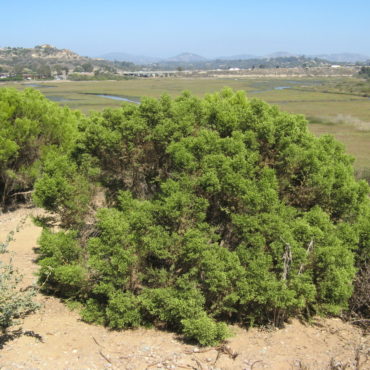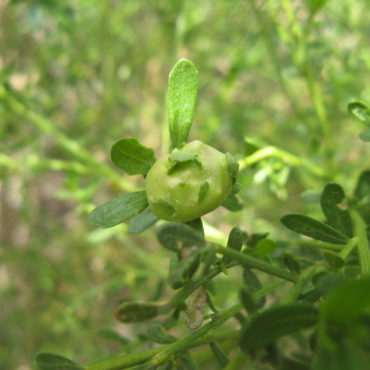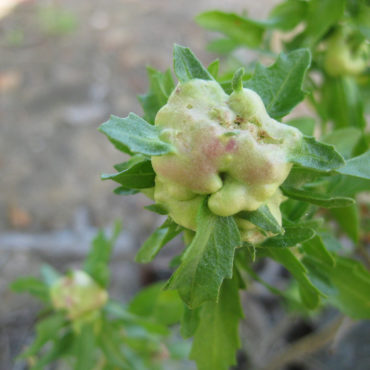Most of the year, coyote brush (or chaparral broom, Baccharis pilularis) can be recognized by its bright green foliage. In the fall, however, plants are covered with white as the shrub releases thousands of tiny seeds, each carried away in the breeze by a delicate, silken parachute.
Coyote Brush
Baccharis pilularis

Other Common Names:
chaparral broom, coyote bush
Description 2,4,5,25,26,59
Coyote brush is a perennial shrub usually less than 10 feet (3 m) tall, with numerous, stiff, ascending branches from an extensive root system, with a taproot that may extend 10 feet (3 m) and a well-developed lateral system. Leaves are bright green and variable, usually less than 1 inch (2.5 cm) long, and broadest at tip. Margins are entire or with a few jagged teeth. Leaves contain resinous (but not usually sticky) oils from numerous surface glands.
Plants bear male and female flowers on separate plants (dioecious). Flowers of both are tiny (called florets) with several crowded together into small flower heads, which in turn are arranged into larger clusters toward the ends of branches. Male florets consist of a tubular, cream-colored, five-lobed corolla, with five stamens forming a cylinder around the style of a sterile pistil. The calyx is reduced to a cluster of stiff hairs (the pappus) around the base of the corolla. Female florets have a slender, pale, tubular corolla that is concealed within the pappus. There are no stamens and the single pistil has a slim, dark-tipped, forked style. Although individual flower heads are small, the large masses of them color the shrubs white or creamy. Blooms occur between August and December1 and are pollinated by a wide variety of insects.
Seeds are less than 1/16 inch (2 mm) in length. The tuft of long bristles persists at one end and serves to disperse the seed through the air. Shrubs are most conspicuous when they are dispersing the plumed seeds.
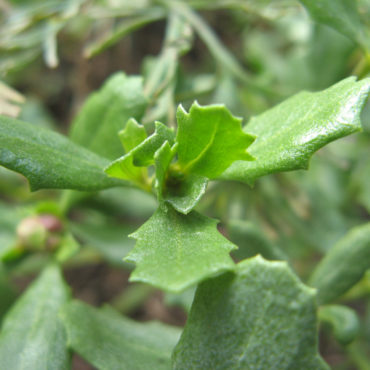
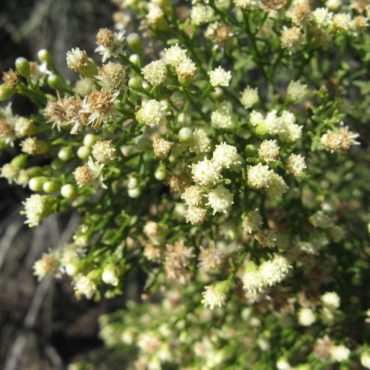
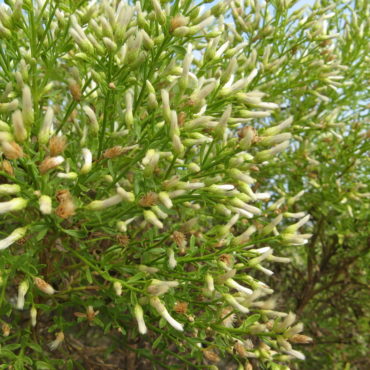
Distribution 5,7,8
Coyote brush is native west of the Coast Ranges below 2000 feet (600 m) from southern Oregon to northern Baja California, and on the Channel Islands. It may dominate coastal sage scrub vegetation after a disturbance but it is also found in chaparral and other vegetation types. It often colonizes disturbed areas.
The genus is distributed globally.
Coyote brush is common in the Reserve, especially in the coastal sage scrub.
Learn more about plant vegetation types here
Classification 2,59
Coyote brush is a dicot angiosperm in the sunflower family, the Asteraceae. This is the largest family of vascular plants in the Northern Hemisphere.143 “Flowers” of Asteraceae are made up of one or both of two types of flowers (florets): symmetrical disk florets and strapped-shaped ray florets. These are crowded onto a common base (receptacle), and together are called a flower head,11,44,49 which is often assumed to be a single flower.
Other familiar Asteraceae that occur in the Reserve include such dissimilar flowers as California sagebrush (Artemisia californica), cobwebby thistle (Cirsium occidentale) and twiggy wreath plant (Stephanomeria spp.).
Baccharis is the only common Asteracea that has male and female flowers on separate plants.11 Species in the genus Baccharis have disk flowers only.
B. serathroides, also found in the Reserve,48 is similar to B. pilularis and hybrids between them are likely. One other Baccharis species, mule fat (B. salicifolia), is frequent in the Reserve, but prefers more riparian areas.
Two subspecies of coyote brush have been described, based largely on their growth form and habitat. Our subspecies is consanguinea, an upright shrub with somewhat brittle stems.48
Jepson eFlora Taxon Page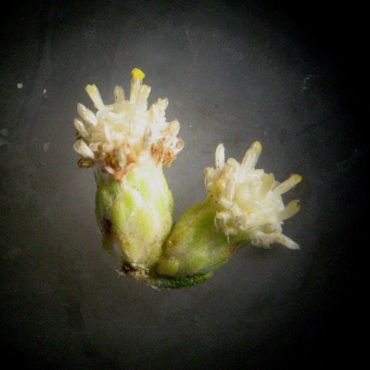
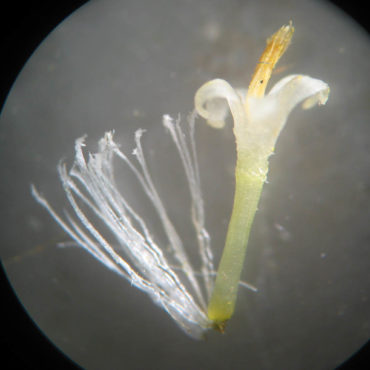
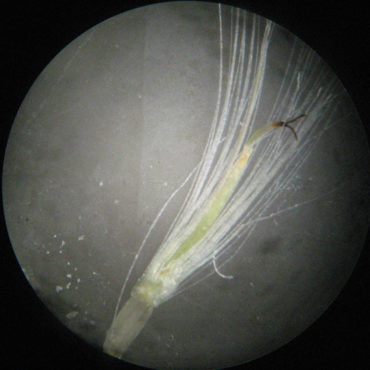
Ecology
Like many plants of dry regions, the waxy coating of coyote brush leaves retards water loss, while the resinous oils may deter grazing.25
Coyote brush colonizes disturbed areas, including post-burn areas. During natural fires the root crown often survives and later resprouts. Also, the numerous small, wind-born seeds have a wide dispersal area and good chance of landing in disturbed areas. However, while coyote brush serves as a nurse-shrub for a variety of other species, it is not tolerant of shade and is generally slowly displaced by more mature vegetation.5
Areas of the Reserve that were once disturbed by farming can be recognized by the high abundance of coyote brush. The area enclosed by the Gemma Parks trail and the area below the Sta. Carina trailhead are two such locations.
Coyote brush is somewhat resistant to burning, perhaps because of high concentrations of fire-retardant organic compounds in the leaves.25 Some local agencies recommend them for planting in fire prone areas.24 Under the right conditions, however, coyote brush will burn.5
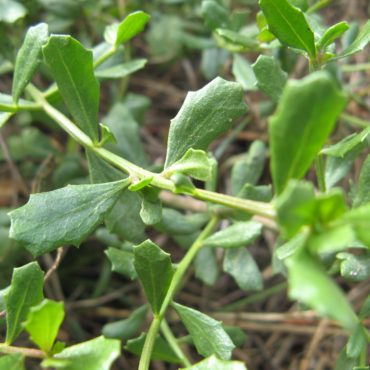
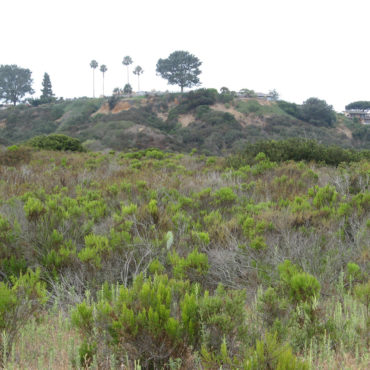
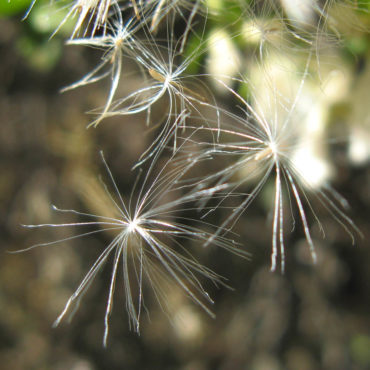
Human Uses
The name “broom” is borrowed from the closely related B. serothroides in which terminal branchlets tend to be more upright and parallel, resembling little brooms. The Chumash Indians used clusters of branchlets of both species when collecting cactus to brush away the small spines,15 and early settlers used these to sweep and even (we are told) as toothbrushes.100
Chumash Indians applied boiled leaves as a remedy for poison oak.15
Because of its rapid growth, wildlife value, erosion control value, and fire resistance, coyote brush is used in native plant gardens and restoration projects.24,79 In general, only male plants are propagated, since many home owners object to the abundant white fluff that accompanies the seeds.
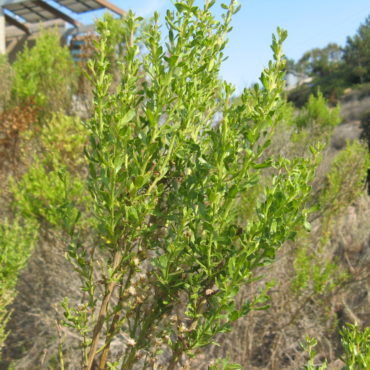
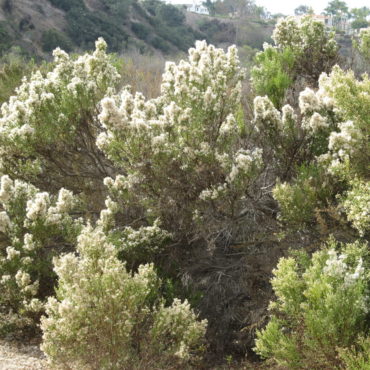
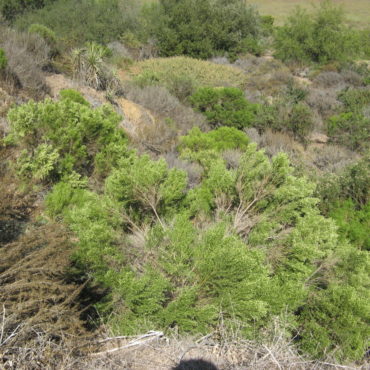
Interesting Facts
Coyote brush commonly supports bud galls created by the host- specific midge Rhopalomyia californica.22 These bud galls often resemble little cauliflowers or little cabbages or something in between. Galls offer protection and nutrition to the midge larvae while they mature, and they sometimes also support the competitors and predators of the midge.The specific name for coyote brush, pilularis, is Latin for having globules, which may refer to these spherical galls.21
The origin of the name “coyote brush” is unclear. One theory holds that the leaves may look like coyote paws; another that the plant is variable and adaptable – “clever, like a coyote”.25 A less imaginative theory suggests it was named because of an ecological association with coyotes.
